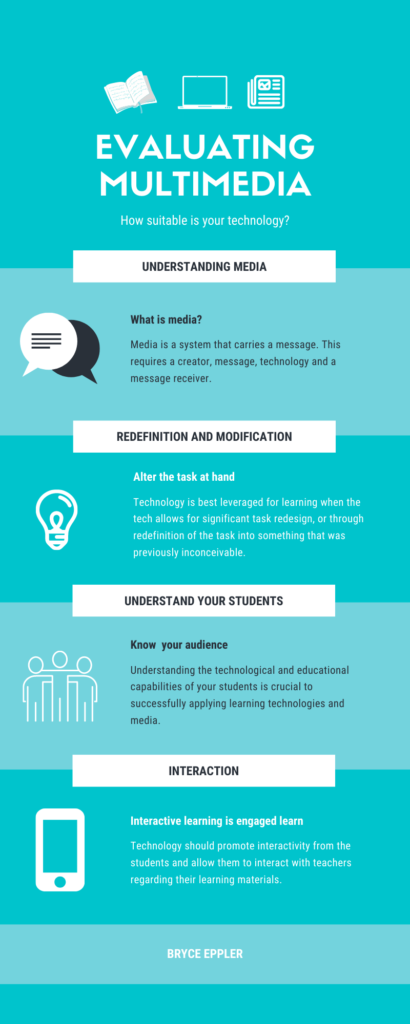SAMR Model
Prior to exploring the SAMR model, I hadn’t thought of classifying technologies based on how they affect the task. In fact, technology is one of the few means we have to rapidly and reliably redefine learning tasks. Historically, many technologies were initially applied as substitutions, but with delveopment these same technologies have evolved to have redefinition capabilities. While this theory is fascinating, it is important to note that it is a model that applied to the use of a product and is not about the process of learning specifically. With that being said, there are evidently many angles to approach theories of learning design. Below is a brief edited presentation on my lessons on the SAMR model. The video was originally 12 minutes long, and I reduced the audio using video editing software.
SECTIONS Model
While the SAMR model was described as a framework for evaluating multimedia, the SECTIONS model was described as a framework for choosing media. I particularly like the definition of media as a system that carries a message from Dr. Tony Bates. Keeping this fundamental purpose in mind helps when using any framework to assess media. Another important takeaway from this model is that we should focus the strengths of each medium and account for it’s affordances when decided which technology is best suited for a task.
Below is an infographic I created based on a combination of the two models. We can use this as a broad guideline for assessing use of technology in learning.

References
Hamilton, E. R., Rosenberg, J. M., & Akcaoglu, M. (2016). The Substitution Augmentation Modification Redefinition (SAMR) Model: a Critical Review and Suggestions for its Use. TechTrends, 60(5), 433–441. https://doi.org/10.1007/s11528-016-0091-y
Mayer, R. E. (2005). The Cambridge handbook of multimedia learning. University of Cambridge.
YouTube. (2016). How to Apply the Samr Model with Ruben Puentedura. YouTube. https://www.youtube.com/watch?v=ZQTx2UQQvbU.
2021-06-21 at 10:19 am
Your summary of SAMR is excellent. Really appreciate your insights from your perspective.